Until further notice, entry to Lichfield Museum (formerly known as the Heritage Centre) at St Mary’s in the Market Square is free of charge! On hearing this, I thought I’d find out a little more about one of its predecessors and set off to find Mr Greene’s Museum, at 12 Sadler Street.
Sadler Street is now of course Market Street, and the only trace of Lichfield’s late eighteenth century ‘Museum of Curiosities’ is a plaque attached to a wall at the entrance to the City Arcade.
To give us an idea of what this museum was like there are some drawings here on the Staffordshire Past Track site and ‘A Descriptive Catalogue of the Rarities, in Mr Greene’s Museum at Lichfield’ (1), is available here via googlebooks. Highlights for me include my old favourite, ‘the Earthen Vessel found (with several others of smaller size) in the Walls of the late Conventual Church of Fair-well near Lichfield, at the time it was taken down in order to be rebuilt’, and also, ‘Part of the Porch, under which stood Lord Brooke General of the Parliament forces, when he receiv’d a mortal wound in his forehead, by some shot from the Battlements of the great Steeple of the Cathedral Church of Lichfield, the force of which was abated by the bullets passing through the above piece of Board’. Perhaps it was ownership of this bit of legendary Lichfield history which inspired Mr Greene to commission the plaque outside 24 Dam Street, better known as Brooke House? (2)
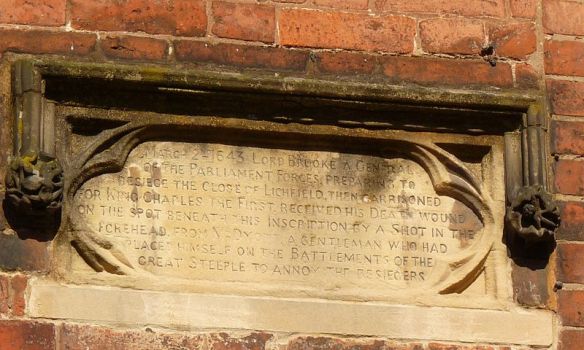
Photograph of plaque commemorating the death of Parliamentary general Lord Brooke in Lichfield in March 1643. Photograph by JRPG, taken from Wikipedia
I’d also like to have seen the ‘small Leaden box, in which is contained some Relicks, and Silver Lace, found in an ancient Leaden Coffin in the Cathedral Church of Lichfield 1748’, but there may be those who would be more interested in the Horn of the Sea Unicorn, five feet and six inches long or even the balls of hair found in the stomach of a cow. Each to their own.
One of the most famous exhibits was a Musical Altar Clock. These days ‘The Lichfield Clock’, as it is now known, can be found at the Victoria Art Gallery in Bath, but what happened to the other objects from the museum? After Greene died in 1793, the collection was sold by his son to various collectors. Some of it was bought back to Lichfield by his grandson, Richard Wright, and displayed in a new museum in the Cathedral Close, which then moved to a property in the north of Dam Street (2). When Wright died in 1821, the collection was broken up again. Given the unique nature of some of the items, I reckon that it might be possible to track these down with a bit of googling? I understand that some of the collection did remain here in Lichfield, and may in the current museum at St Mary’s. Let’s hope that if nothing else we managed to hold onto the head of a pike which weighed forty pounds, taken at Burton on Trent.
Joking apart, the museum played an important role in the West Midlands enlightenment of the late eighteenth century. According to the Revolutionary Players website, ‘By contemporary museum standards of collection and display, Greene was an eccentric antiquarian, but he provided a window on the world for those who were enthusiastically investigating, accumulating and classifying knowledge’.
As far as I can tell, Lichfield’s window on the world was closed until 1859, when a new museum was opened at the edge of what is now Beacon Park….but that’s a visit we’ll keep for another day.
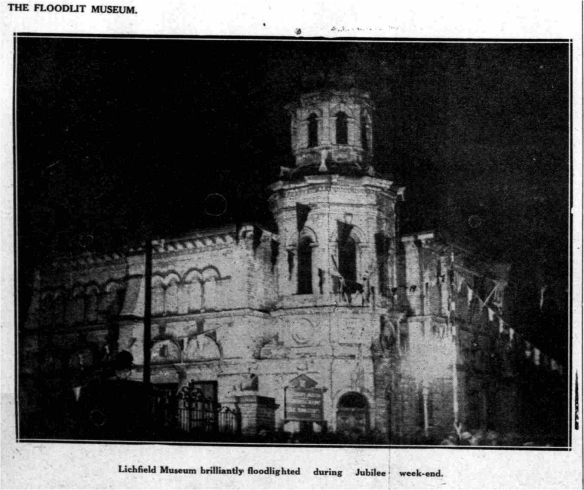
Floodlit Lichfield Museum and Free Library in Beacon Park, during Jubilee Celebrations 1935. Taken from Lichfield Mercury archive.
(1) A copy of which was lent to me recently – thank you Patti!
(2) Does anyone know where on Dam Street exactly?
Sources
Lichfield: Social and cultural activities’, A History of the County of Stafford: Volume 14: Lichfield (1990), pp. 159-170.
http://www.staffspasttrack.org.uk/
http://www.birminghampost.co.uk/lifestyle/nostalgia/chris-upton-looks-back-lichfields-4027881
http://www.birminghampost.co.uk/lifestyle/nostalgia/crucifixion-clock-lichfield-museums-star-4053561

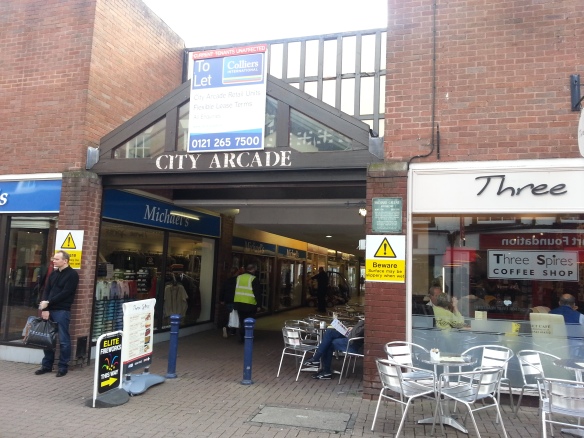
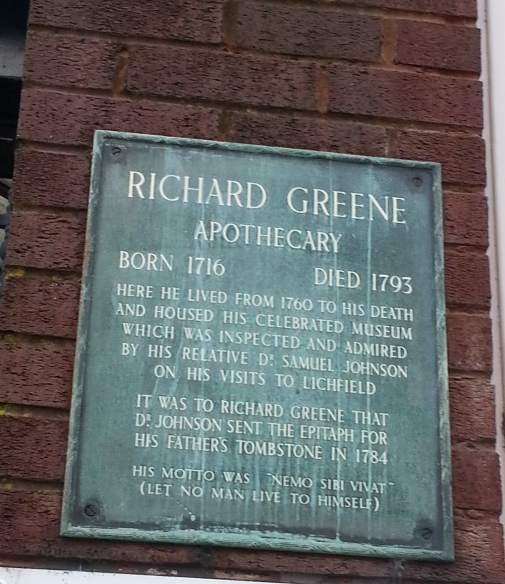
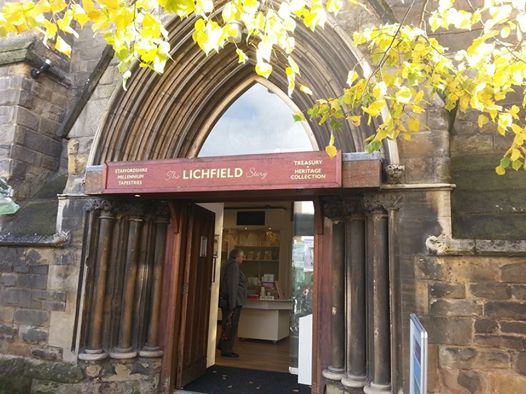
Hi Kate, the times i`ve walked through the City archade and never noticed the blue plaque to Ricahard Greene. Many thanks for opening my eyes.
LikeLike
Hi Clive – it’s a bit more obvious now there’s a big exclamation mark on a H&S sign underneath it! Glad you found it of interest! Kate
LikeLike
Great article Kate! If there was one piece of Lichfield that i wish was still here it would be Greene’s museum. The armour is still in the tower of London, but theres pieces all over the world! Shows that it was an incredible collection and much sought after by museums everywhere. He also made a popular hemorrhoid cream…but we’ll concentrate on his museum curios instead!
LikeLike
Its great to see that the plaque is still there. I can remember the museum in the libary and at the cathedral,and other bits under the Guildhall at one point, and the idea of St Marys was to gather all things about Lichfield together.
Lichfield was an active place, and Greene was not the first collector to come from Lichfield. the most famous was Elias ASHMOLE who later founded the Ashmolean in Oxford. He was born just around the corner in Breadmarket St (opposite St Marys, between Dr Johnsons birthplace and Barclays)..look up towards the first floor…I think there is a plauque? Silver given by Ashmole to the city is in the collection in St Marys!
LikeLike